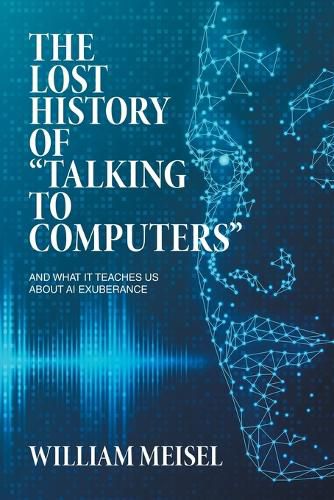Readings Newsletter
Become a Readings Member to make your shopping experience even easier.
Sign in or sign up for free!
You’re not far away from qualifying for FREE standard shipping within Australia
You’ve qualified for FREE standard shipping within Australia
The cart is loading…






This title is printed to order. This book may have been self-published. If so, we cannot guarantee the quality of the content. In the main most books will have gone through the editing process however some may not. We therefore suggest that you be aware of this before ordering this book. If in doubt check either the author or publisher’s details as we are unable to accept any returns unless they are faulty. Please contact us if you have any questions.
Much science fiction has humans talking to computers, an early example being HAL in the movie 2001 in 1968. That vision motivated many people to attempt making the imagined technology real, including the author, who founded a company developing speech recognition technology in the 1980s. Speech recognition was an early part of Artificial Intelligence, computers doing a task that had previously been exclusive to humans, and proved to be more difficult than early pioneers expected. The Lost History of "Talking to Computers" documents 27 years of those efforts; the source of the history is the author's 309 monthly issues of a newsletter tracking the hundreds of companies trying to make a business out of this challenging technology. Today, we talk to computers frequently on our smartphones (e.g., Apple's Siri or Google Assistant) or to a home speaker (e.g., Amazon's Alexa) and often when we telephone a customer service number. Most doctors use computer transcription of their notes for Electronic Healthcare Systems. Speech recognition is teaching how to speak a new language and finding specific content in a video file. How did we get here and where will it take us? What can we learn from this history that has implications for the huge investments in more general AI today? Readers will be amazed at how many companies were inspired by this challenge beginning more than three decades ago.
$9.00 standard shipping within Australia
FREE standard shipping within Australia for orders over $100.00
Express & International shipping calculated at checkout
Stock availability can be subject to change without notice. We recommend calling the shop or contacting our online team to check availability of low stock items. Please see our Shopping Online page for more details.
This title is printed to order. This book may have been self-published. If so, we cannot guarantee the quality of the content. In the main most books will have gone through the editing process however some may not. We therefore suggest that you be aware of this before ordering this book. If in doubt check either the author or publisher’s details as we are unable to accept any returns unless they are faulty. Please contact us if you have any questions.
Much science fiction has humans talking to computers, an early example being HAL in the movie 2001 in 1968. That vision motivated many people to attempt making the imagined technology real, including the author, who founded a company developing speech recognition technology in the 1980s. Speech recognition was an early part of Artificial Intelligence, computers doing a task that had previously been exclusive to humans, and proved to be more difficult than early pioneers expected. The Lost History of "Talking to Computers" documents 27 years of those efforts; the source of the history is the author's 309 monthly issues of a newsletter tracking the hundreds of companies trying to make a business out of this challenging technology. Today, we talk to computers frequently on our smartphones (e.g., Apple's Siri or Google Assistant) or to a home speaker (e.g., Amazon's Alexa) and often when we telephone a customer service number. Most doctors use computer transcription of their notes for Electronic Healthcare Systems. Speech recognition is teaching how to speak a new language and finding specific content in a video file. How did we get here and where will it take us? What can we learn from this history that has implications for the huge investments in more general AI today? Readers will be amazed at how many companies were inspired by this challenge beginning more than three decades ago.